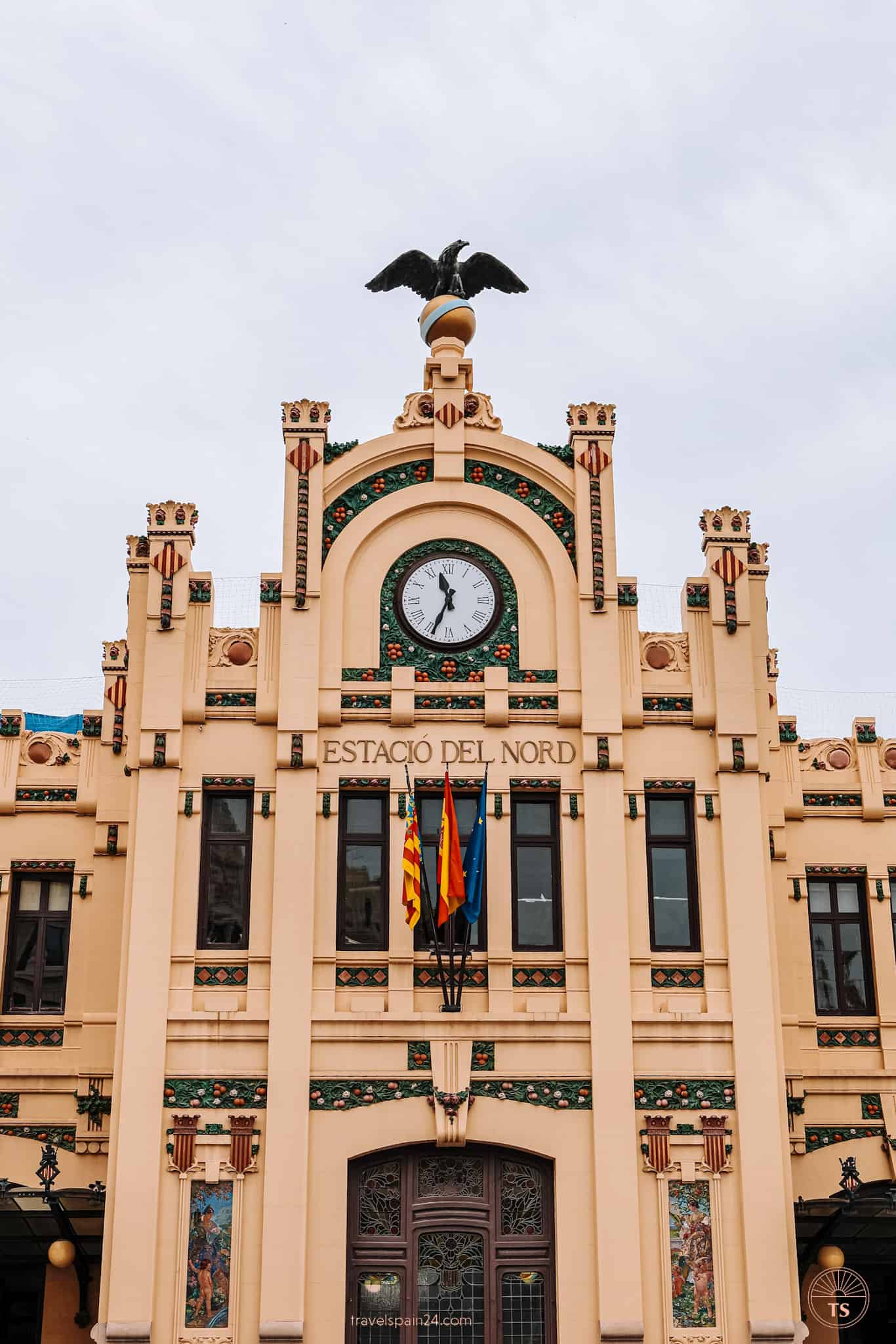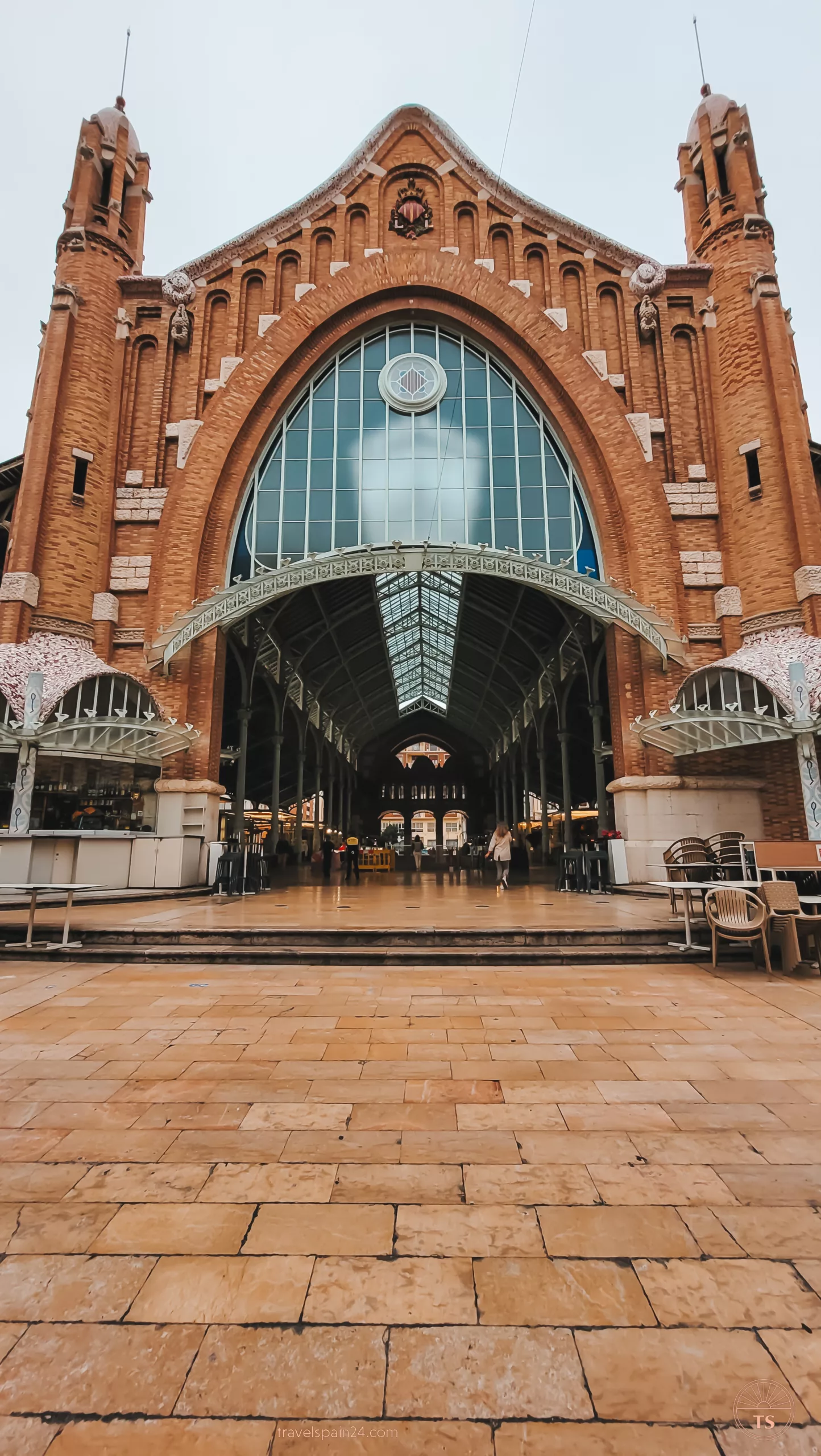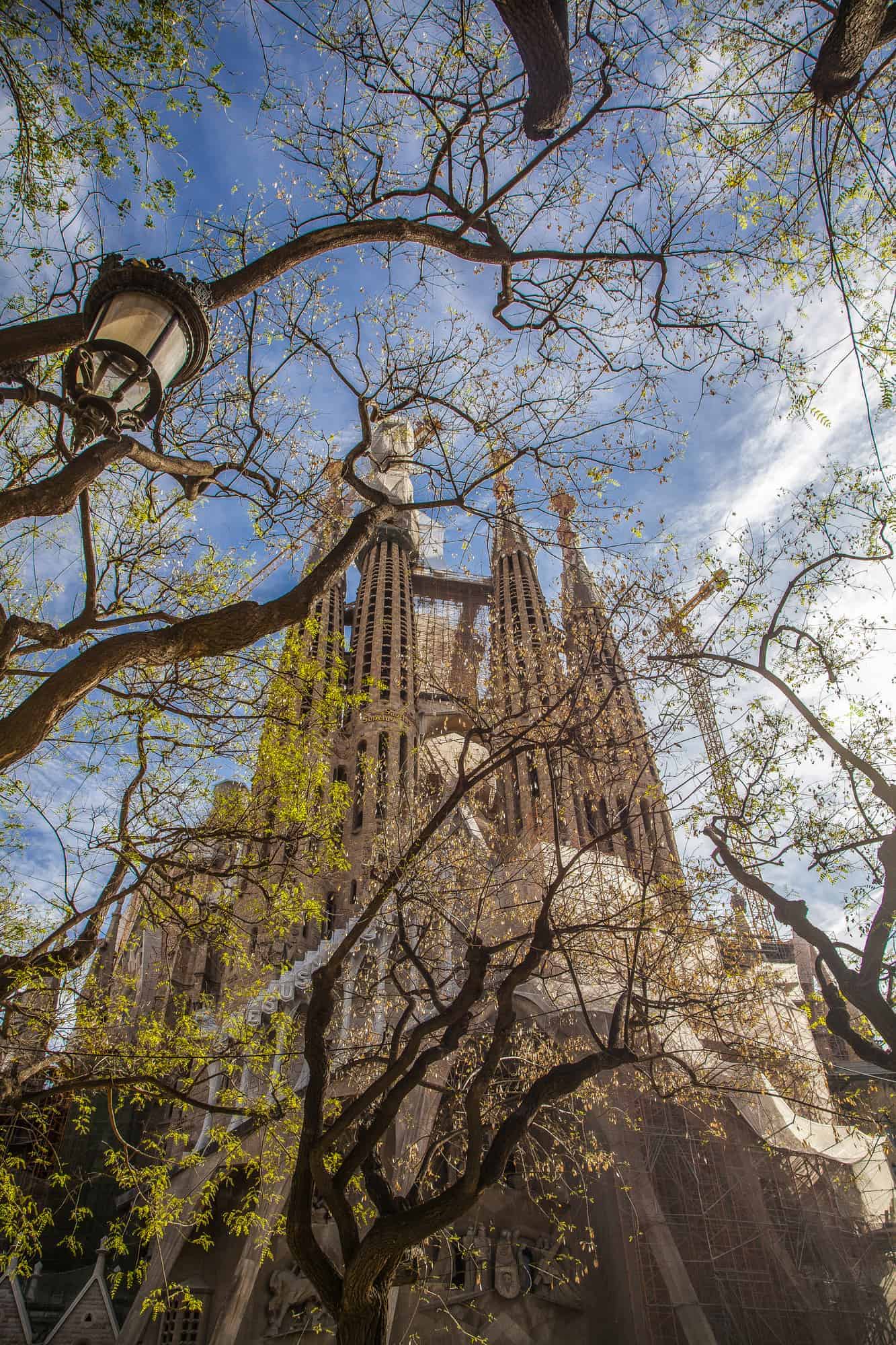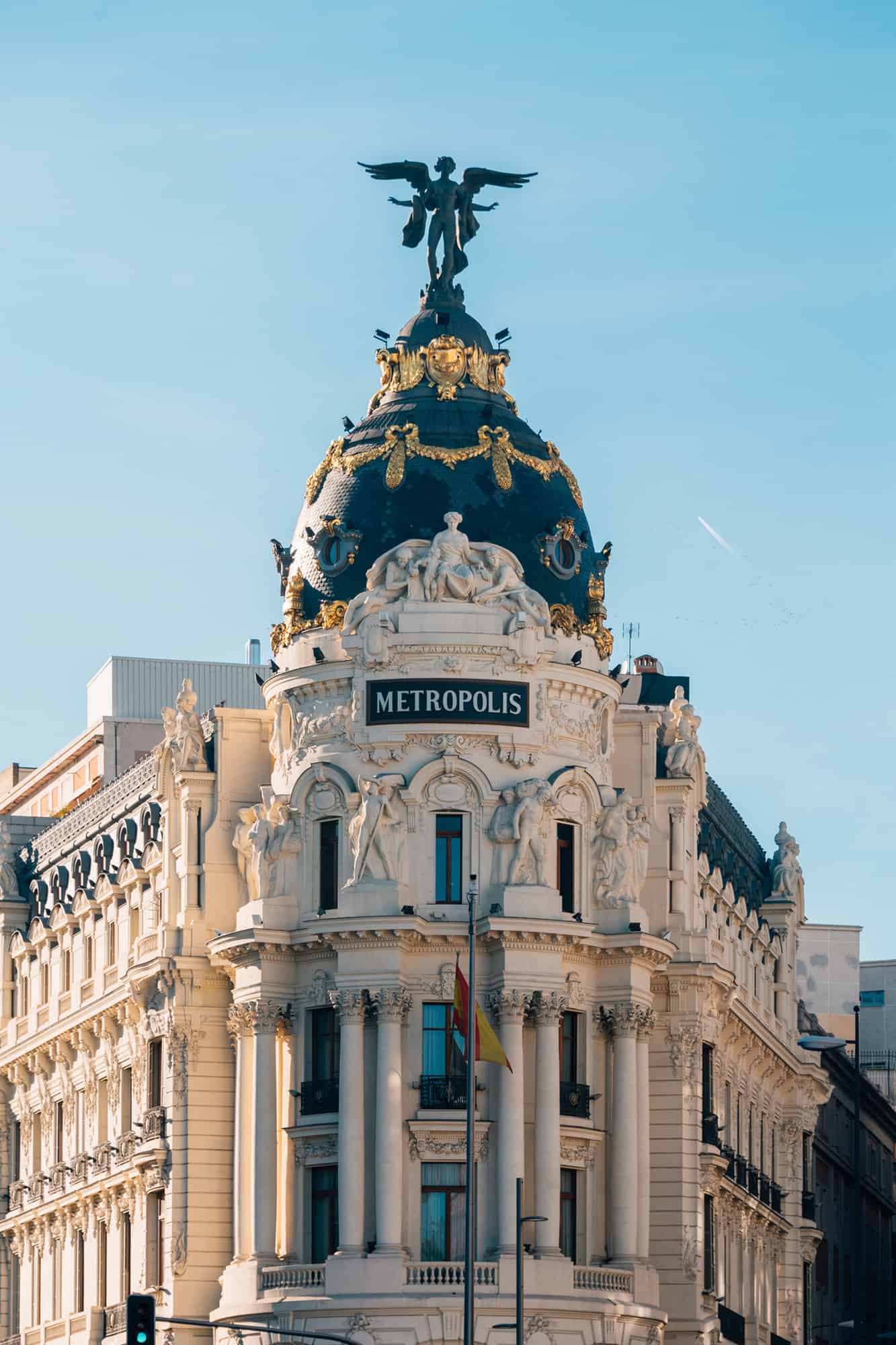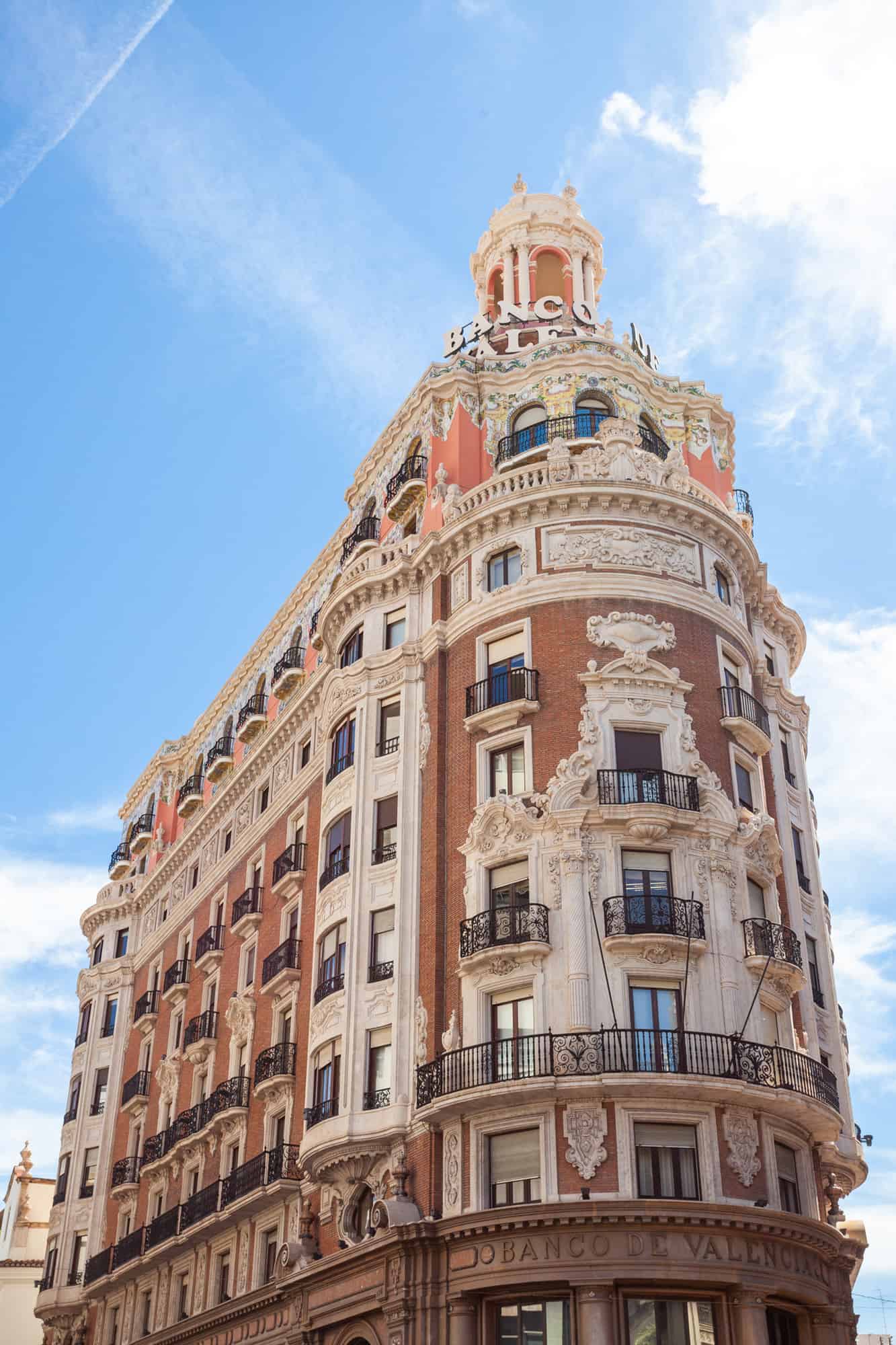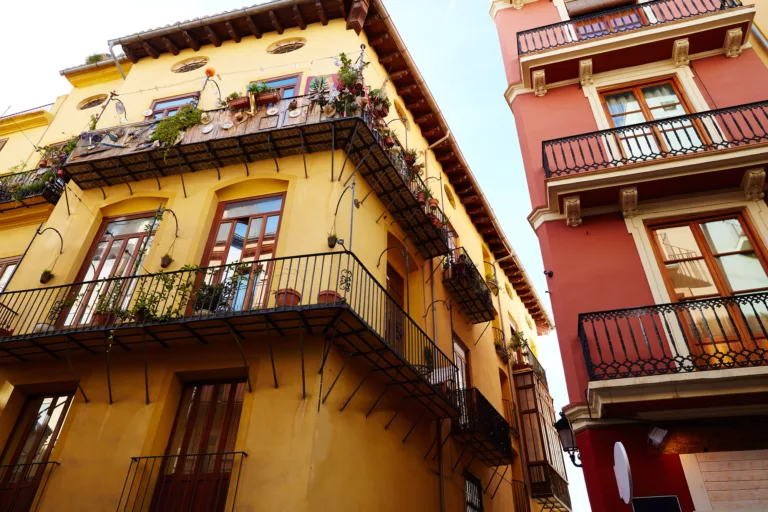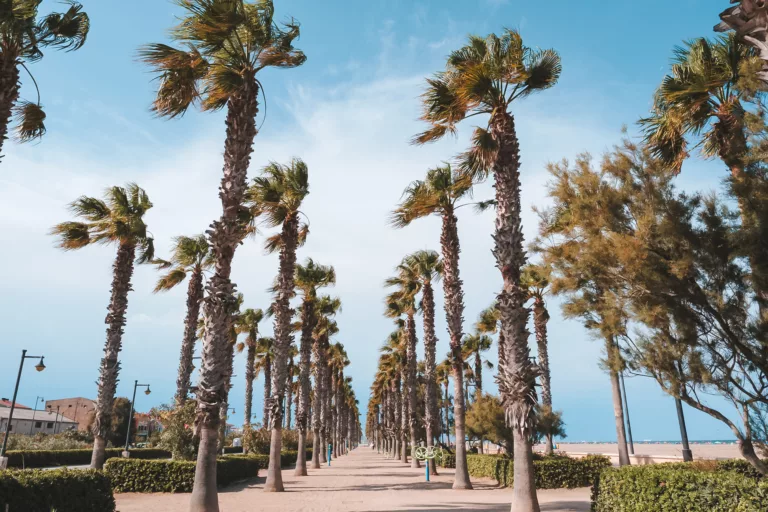Plaza de Toros de Valencia: Visitor’s Guide
Visiting Plaza de Toros Valencia in 2024? Read our quick guide. Get the scoop on its story, look, and secrets. Learn how to get your tickets, the best time to go, and how to get there. Plus, advice for a great trip and other neat places to check out.

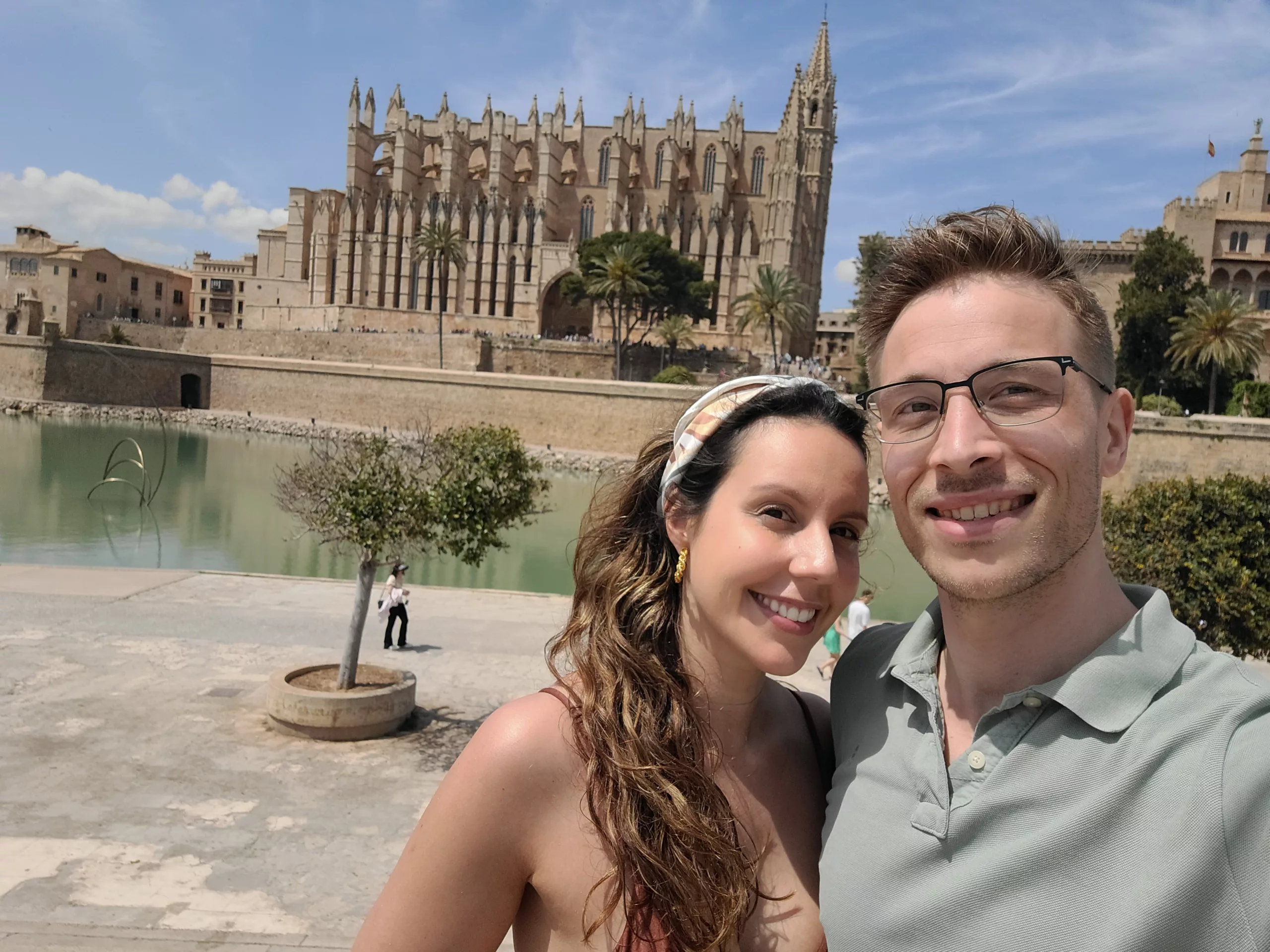
Hi, we’re Timon & Filipa!
We travel across Spain in our motorhome, Speedy, and update TravelSpain24 with fresh content, practical tips, and personal stories from the road. Our goal is to help you experience Spain beyond the typical tourist trails.
The Plaza’s Beauty and Design
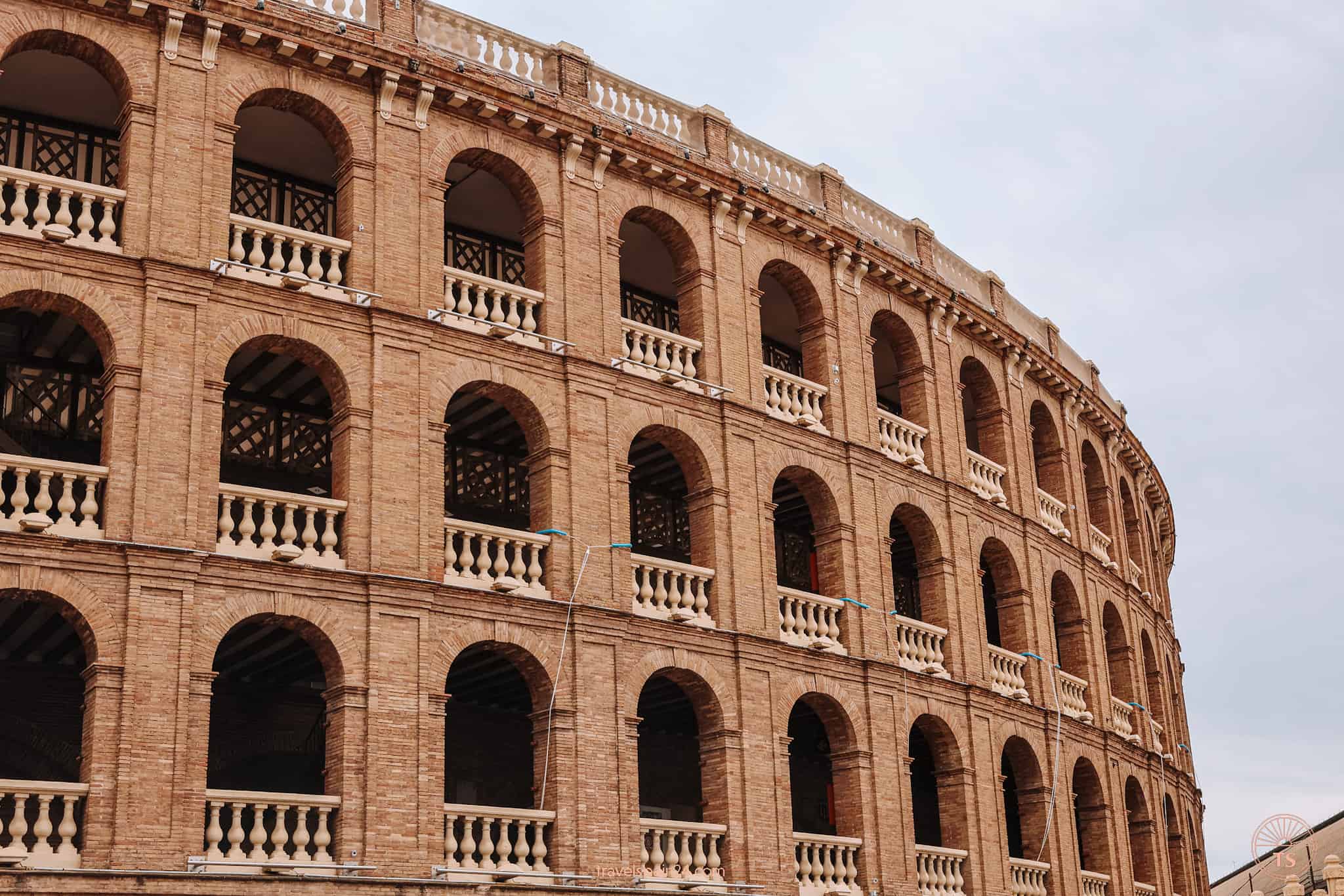
The arena in Valencia was built in approximately 1850, and it opened its doors in 1859. The inspiration for the design of this bullring is obviously the Roman arenas, including the Colosseum.
The venue is formed by a polygon with 48 sides, creating 384 external arches. The architect was Valencian Sebastián Monleón Estellés, who designed the structure to be 17.5 meters or almost 60 feet tall. This is also an early example of cast iron columns used in a building, creating impressive transparency in the boxes. The original arena had an inner diameter of 52 meters or 170 feet, but over time this was reduced.
This creates an impressive structure that is breathtaking when you stand inside, particularly if no massive crowds or events occur. The Plaza de Toros is considered one of the most beautiful arenas in Spain. Four levels are decorated with different wooden balustrades and brick arches. This creates 24 rows in the stands, where over 10,000 people can enjoy events, including concerts, sporting exhibitions, and more.
Outside in the Plaza, the atmosphere is lively, and you can find quaint cafes, bars, and shops where you can relax and take in the splendor of the structure.
Facts about Plaza de Toros
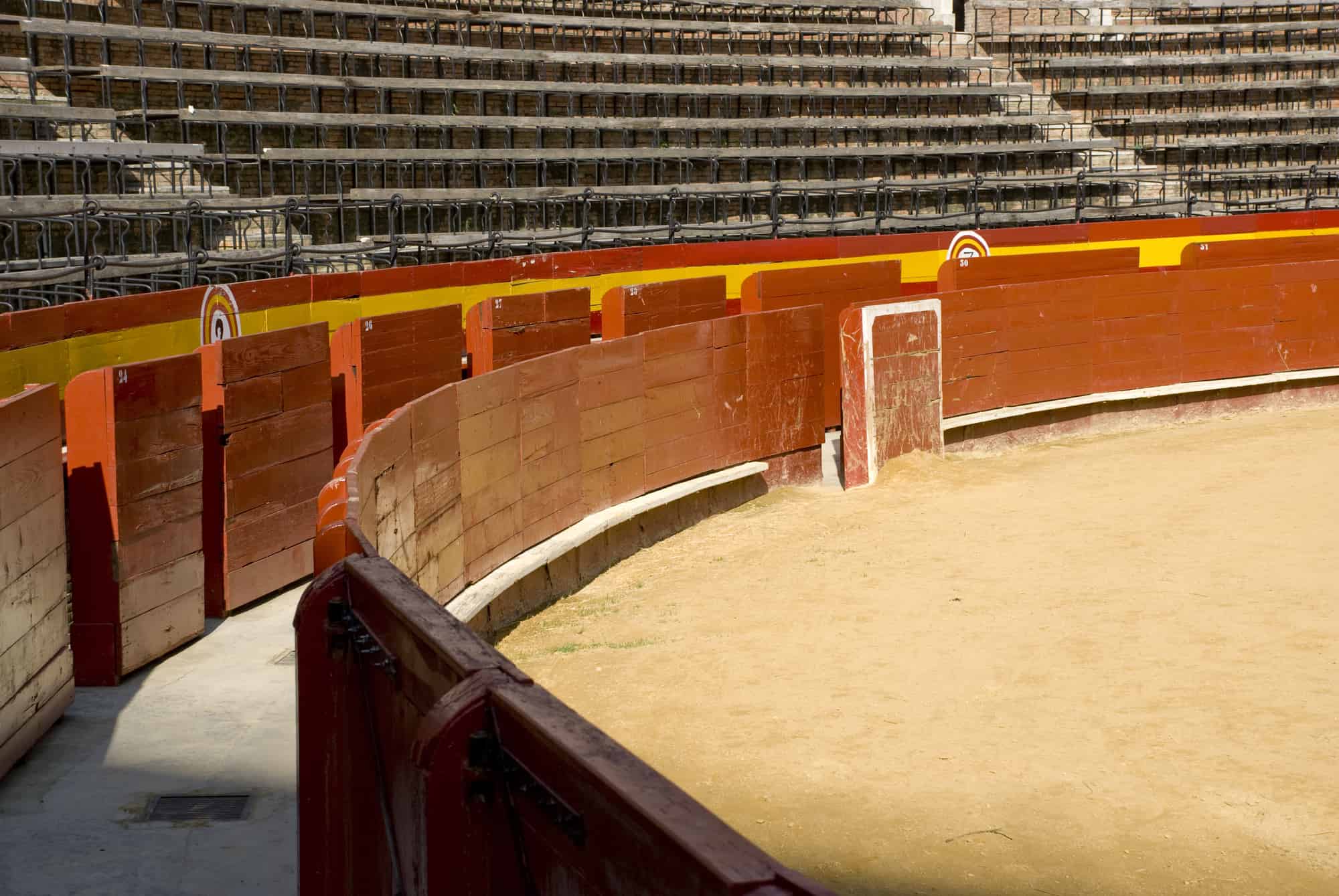
In addition to its impressive history and architecture, there are some interesting facts about the Plaza de Toros:
The tribute statue: A statue was created in tribute to Manolo Montoliu. This matador was considered to be one of the best of the twentieth century. Unfortunately, in May 1982, Montoliu, who was 38 at the time, was taken on the horns with immediately fatal wounds.
It was once a prison: Although the Plaza de Toros has been used almost continually since it opened its doors, you may not know it was once a prison! At the end of the Civil War, the building was used as a temporary prison and concentration camp to house Republicans under Franco’s dictatorship.
The flags are not simply decorative: If you wander past the bullring, you may think the flags are decorative, but they are actually an announcement of ongoing events. The different flags show whether a fully grown bull match (corrida de toros) is going on or if a young bullfighter (novillada) is facing a bull before becoming officially a matador.
The Plaza was not the start of bullfighting in Valencia: Although the Plaza de Toros de Valencia did not open until 1859, there are written references to bullfighting events in the city dating back to 1373. This means that bullfighting events have been happening in the city for centuries, but these typically took place in temporary wooden structures that were taken down after the events finished.
Planning Your Visit: Tickets and Opening Hours
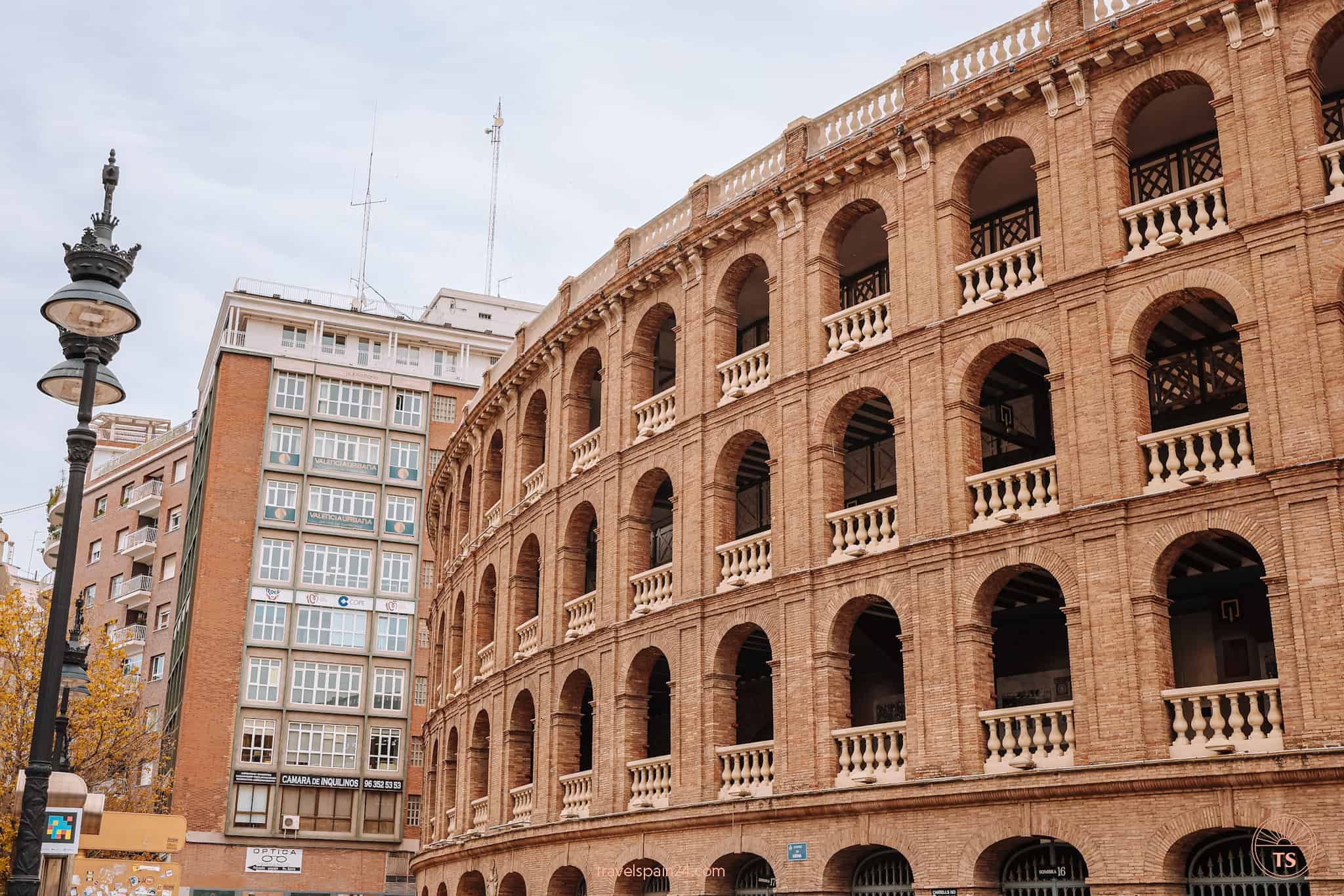
Although the Plaza de Toros looks amazing from the outside with its interesting bricks and arches, you need to go inside to truly appreciate this superb structure.
To visit the stands, stadium, and museum, please note that the opening times are similar to those of other attractions in the city. Here are the opening times:
Mondays: 10:00 AM – 2:00 PM, 5:00 PM – 8:00 PM
Tuesday to Saturday: 10:00 AM – 2:00 PM
Sundays and Holidays: 10:00 AM – 2:00 PM
Please note that these times can vary depending on the season. For instance, if you visit Valencia in October, the schedule may be different, and at certain times of the year, the Plaza might close on Mondays.
Bullfighting events generally take place in March during the Fallas Festival, in May during the Virgen de los Desamparados celebrations, the July Feria, and the October Feria.
You can purchase tickets for either a live event or a regular visit. Bullfights may last several hours, whereas a regular visit ticket grants access to both the stadium and the museum, which is expected to take around one hour.
If you visit on an event day, you will be unable to access the arena, but you can still visit the museum. Access to the arena is restricted both before and after the event, so if you wish to experience the bullring fully, avoid visiting on a fight day.
How To Get There: Directions and Transport Options
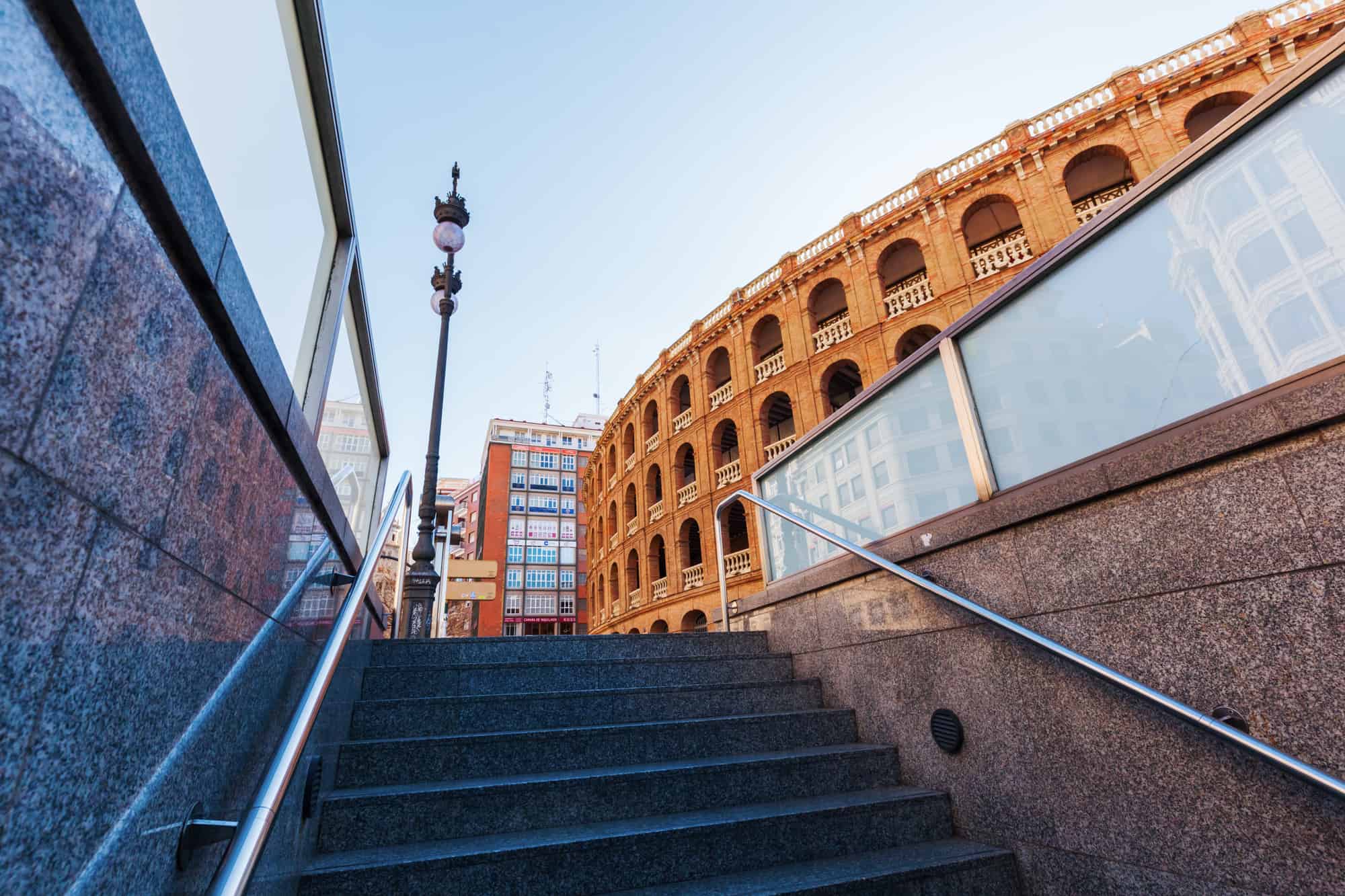
The Plaza de Toros de Valencia is easily accessible at the edge of the old quarters. It is just outside the old city walls near Valencia Station North, making it easy to find regardless of the method of transport you choose for your visit.
If you don’t want to walk, the Plaza de Toros can be reached by both metro and tram as there are a number of nearby stops, including Colon, Alacant, and Xàtiva. These stops are only a few minutes walk from the Bullring entrance, and you can access them using the 3,5 and 9 lines.
Another option to get to the Plaza de Toros is by bike. You can rent a bike in Valencia and get around many popular sights, including the bullring. Valencia is very bike-friendly, and there are bike paths that circle the old quarters of the city. There are also pedestrian zones in various areas of the city where you can ride, providing sufficient room for people to walk.
Of course, if you’re feeling active, you can reach the Plaza de Toros on foot. The bullring is highly visible, and if you’re already wandering through the old town of Valencia, you only need to walk for approximately five minutes from the Plaza del Ayuntamiento. Just follow the Avenida del Marques de Sotelo.
Making the Most of Your Experience
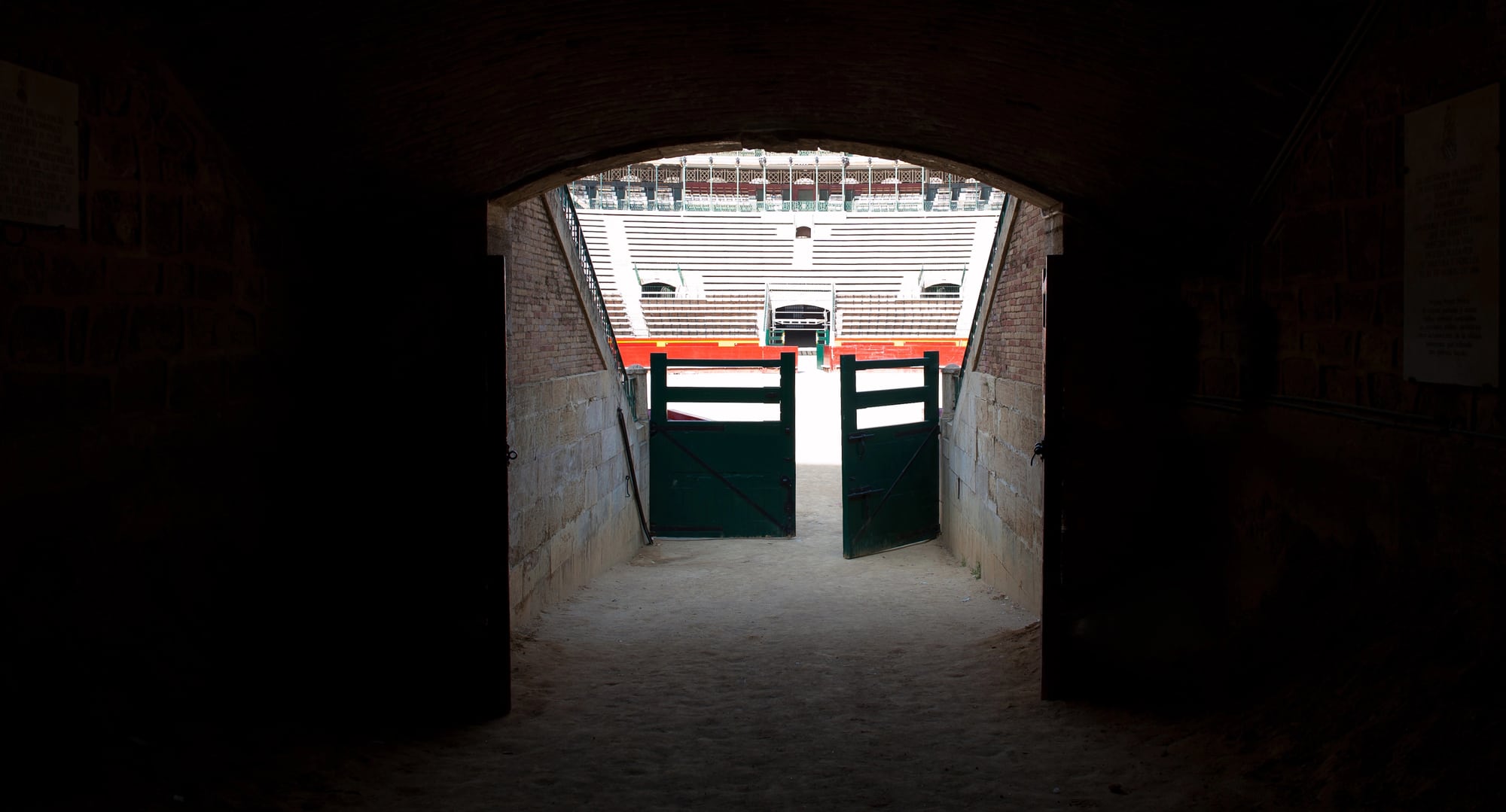
While the Plaza de Toros is a prominent attraction in the city, a few things can allow you to make the most of your experience.
Inside the stadium, the steps to the seating area are quite steep. This means that you should be prepared with comfortable shoes and water.
It is also important to note that while bullfighting has been banned in some regions and cities in Spain, live events still take place in Valencia. If you’re attending an event, you need to be prepared for the bulls to be killed in front of the audience. You will also find videos in the museum showing the killing of bulls. So, if you’re uncomfortable with this aspect of the venue, you should avoid a bullfight and certain areas of the museum.
Attractions Near Plaza de Toros
Since it is prominently located, there are plenty of attractions near the Plaza de Toros, so you can plan a full day of sightseeing. You will find the bullring, museums, and markets within comfortable walking distance from the Valencia Station North.
The Plaza del Ayuntamiento is only a few minutes walk from the bullring. This is the Valencian city hall, and it has one of the most important squares in the city. You can relax by the fountain, enjoy a drink, or simply take in the view of the flower market.
If you’re a fan of art nouveau, it is worth the 10 minute walk to the Mercat de Colon. This is considered one of the most beautiful buildings in the city. The site was previously a market, but today it is predominantly a dining and drinking venue with numerous outdoor cafes, bars and restaurants. The Mercat de Colon is a gated area with brick columns, a renovated roof and ceramic detailing.
If you’re looking for some of the best tapas in Valencia, be sure to check out the Central Market. This stunning structure showcases Valencian craftsmanship and is the biggest fresh produce market in Europe. The central bar inside is where you can enjoy breakfast, tapas, or lunch, and you’ll only need to walk 10 minutes from the Plaza de Toros.
Near the Central Market is the Lonja de la Seda or Silk Exchange. This Valencian Gothic building dates back to the 1500s, and you can learn about the silk trades and the Golden Age in Valencia’s merchant history.
Search the site
Popular Destinations
Just letting you know
When you buy something through our links, we’ll earn a small commission—don’t worry, it won’t cost you any extra! It’s a win-win, right?
Exclusive Heymondo Travel Insurance Offer
Planning a trip? Make sure you’re covered! We’ve teamed up with Heymondo to give our readers a special deal: 5% off travel insurance. Grab this deal and know you’re looked after on your next trip.

